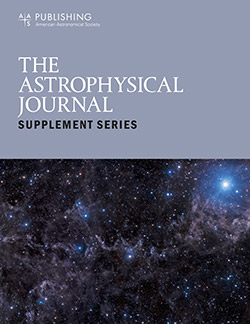基于深度迁移学习方法的白矮星搜索模型
IF 8.5
1区 物理与天体物理
Q1 ASTRONOMY & ASTROPHYSICS
引用次数: 0
摘要
白矮星代表了97%以上恒星演化的最终阶段,在银河系的结构和演化研究中起着至关重要的作用。近年来,在使用深度学习方法识别大规模数据中的唯一对象方面取得了重大进展。本文提出了一种基于迁移学习的白矮星识别模型。利用LAMOST DR9发布的光谱构建数据集,并训练卷积神经网络模型。然后使用二元分类模型的迁移学习方法对模型进行进一步训练。我们的最终模型由一个七类分类模型和一个二元分类模型组成。该测试集的准确率为96.08%。我们提出的模型成功地识别了先前论文中发表的4479颗白矮星中的4314颗。我们将该模型应用于LAMOST DR9 V1星表中1,121,128个光谱数据的过滤。随后,我们获得了6317颗候选白矮星,其中5014颗经过交叉验证,发现是已知的白矮星。我们最终从剩余的1303颗候选白矮星中确定了489颗新白矮星,其中包括377颗DA、1颗DB、4颗DZs、1颗磁性WD、101颗DA+M双星和1颗DB+M双星。我们的研究还将迁移学习方法与非迁移学习方法进行了比较,结果表明迁移学习提供了更快的训练速度和更高的准确率。我们为后续的研究提供了训练好的模型和相应的使用程序。本文章由计算机程序翻译,如有差异,请以英文原文为准。
A White Dwarf Search Model Based on a Deep Transfer-learning Method
Abstract White dwarfs represent the ultimate stage of evolution for over 97% of stars and play a crucial role in studies of the Milky Way’s structure and evolution. Recent years have witnessed significant progress in using deep-learning methods for identifying unique objects in large-scale data. In this paper, we present a model based on transfer learning for identifying white dwarfs. We constructed a data set using the spectra released by LAMOST DR9 and trained a convolutional neural network model. The model was then further trained using a transfer-learning approach for a binary classification model. Our final model is comprised of a seven-class classification model and a binary classification model. The testing set yielded an accuracy rate of 96.08%. Our proposed model successfully identifies 4314 of the 4479 white dwarfs published in previous papers. We applied this model to filter the 1,121,128 spectral data from the LAMOST DR9 V1 catalog. Subsequently, we obtained 6317 white dwarf candidates, of which 5014 were cross-validated and found to be known white dwarfs. We finally identified 489 new white dwarfs out of the remaining 1303 candidates, containing 377 DAs, 1 DB, 4 DZs, 1 magnetic WD, 101 DA+M binaries, and 1 DB+M binary. Our study also compared transfer-learning methods with non-transfer-learning methods, and the results show that transfer learning provides faster training speed and a higher accuracy rate. We provide the trained model and a corresponding usage program for subsequent studies.
求助全文
通过发布文献求助,成功后即可免费获取论文全文。
去求助
来源期刊

Astrophysical Journal Supplement Series
地学天文-天文与天体物理
CiteScore
14.50
自引率
5.70%
发文量
264
审稿时长
2 months
期刊介绍:
The Astrophysical Journal Supplement (ApJS) serves as an open-access journal that publishes significant articles featuring extensive data or calculations in the field of astrophysics. It also facilitates Special Issues, presenting thematically related papers simultaneously in a single volume.
 求助内容:
求助内容: 应助结果提醒方式:
应助结果提醒方式:


